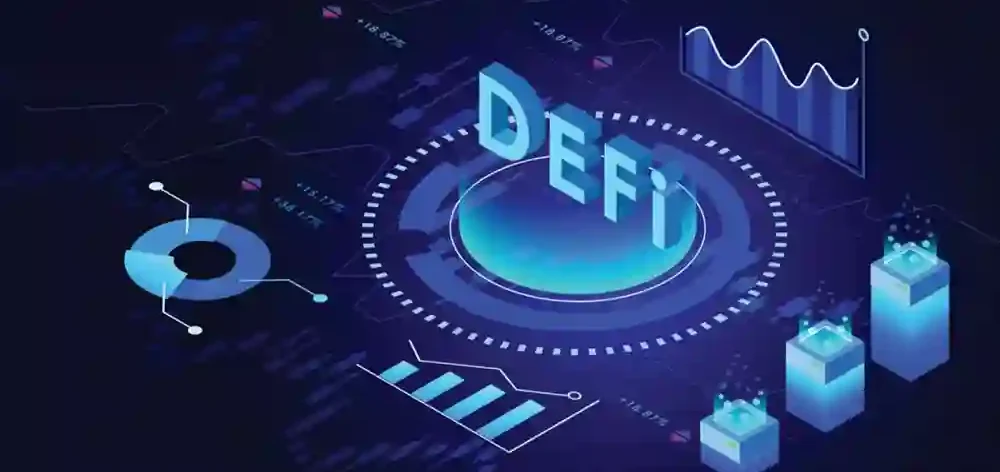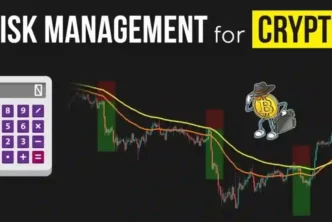Decentralized Finance (DeFi) has rapidly gained prominence in the financial ecosystem, leveraging blockchain technology to offer alternatives to traditional financial services. By eliminating intermediaries, such as banks and financial institutions, DeFi enables peer-to-peer transactions, providing transparency, inclusivity, and efficiency. As the global financial landscape continues to evolve, the future of DeFi holds immense potential, yet faces challenges that need to be addressed for widespread adoption.
What is DeFi?
Understanding DeFi
DeFi refers to a broad range of financial services and products built on blockchain platforms, predominantly Ethereum, that operate without centralized intermediaries. These platforms use smart contracts to automate processes such as lending, borrowing, trading, and insurance. DeFi offers users the ability to manage their financial assets directly from their wallets, providing them greater control and flexibility.
The Role of Blockchain in DeFi
Blockchain is the foundational technology behind DeFi, providing a decentralized, immutable ledger that ensures transparency and security. Transactions are recorded on the blockchain, which is publicly accessible, enabling users to verify transactions without relying on a central authority. The use of smart contracts further enhances the automation of DeFi applications, ensuring that the terms and conditions of financial transactions are executed as agreed, without the need for intermediaries.
The Rise of DeFi: Past, Present, and Future
The Growth of DeFi
DeFi has seen explosive growth since its inception, particularly from 2020 onwards, with the total value locked (TVL) in DeFi protocols reaching billions of dollars. The introduction of yield farming, liquidity pools, decentralized exchanges (DEXs), and stablecoins contributed significantly to the expansion of DeFi applications. As DeFi platforms continued to innovate, they attracted users looking for alternatives to traditional banking services.
Challenges Facing DeFi Today
Despite its rapid growth, DeFi is not without its challenges. Issues such as scalability, security, regulatory uncertainty, and high gas fees remain obstacles that need to be addressed to ensure its continued success. Moreover, the DeFi ecosystem’s reliance on Ethereum presents challenges due to network congestion, which leads to increased transaction costs.
The Future of DeFi: Key Trends to Watch
1. Interoperability Between Blockchains
One of the main limitations of DeFi today is the lack of interoperability between different blockchain networks. Currently, most DeFi applications are built on the Ethereum blockchain, creating a fragmented ecosystem where users and assets are confined to a single blockchain. However, the future of DeFi will likely involve greater interoperability between various blockchains, enabling seamless transactions across different platforms.
Projects such as Polkadot, Cosmos, and Avalanche are already making strides in creating cross-chain compatibility. These platforms aim to facilitate the transfer of assets and data between different blockchains, making it easier for users to engage with DeFi applications across multiple networks. This will enhance the overall user experience, reduce friction, and open up new opportunities for decentralized finance.
2. Layer 2 Solutions: Scaling DeFi
Scalability has long been a challenge for DeFi platforms, particularly on the Ethereum network. As more users interact with DeFi protocols, the network becomes congested, leading to high gas fees and slow transaction times. Layer 2 solutions, such as Optimistic Rollups and zk-Rollups, are designed to address these scalability issues by processing transactions off-chain and then settling them on the main Ethereum blockchain.
The integration of Layer 2 solutions will significantly improve the user experience, reduce transaction costs, and increase the overall efficiency of DeFi platforms. With the growing adoption of Layer 2 technologies, the future of DeFi will be characterized by faster, more affordable, and scalable applications.
3. Decentralized Autonomous Organizations (DAOs)
Decentralized Autonomous Organizations (DAOs) are blockchain-based entities that operate without centralized control. They are governed by the community through smart contracts, allowing token holders to vote on proposals and decisions related to the organization’s operations. DAOs have already made significant strides in the DeFi space, with many protocols and projects adopting DAO governance models.
In the future, DAOs will likely play a crucial role in shaping the development of DeFi. As more DeFi platforms adopt decentralized governance structures, the power to make decisions will be distributed among users rather than a central authority. This will enable a more democratic, transparent, and inclusive financial ecosystem, where users have greater control over the direction of the projects they support.
4. DeFi and Traditional Finance Integration
While DeFi has primarily been seen as an alternative to traditional finance, the two worlds are increasingly converging. Many traditional financial institutions are exploring ways to integrate DeFi solutions into their operations. For instance, banks are beginning to adopt blockchain technology for settlement and cross-border payments, while investment firms are offering DeFi-based products to their clients.
The future of DeFi may involve a hybrid financial system that combines the best aspects of decentralized and traditional finance. This could lead to the development of new financial products, such as tokenized securities, decentralized lending platforms for institutional investors, and DeFi-based insurance models. As the lines between DeFi and traditional finance blur, we could see increased collaboration and innovation in the financial sector.
5. Regulation and Legal Frameworks
As DeFi continues to grow, regulatory bodies around the world are starting to take notice. Governments are exploring ways to regulate DeFi platforms to ensure they operate within existing legal frameworks and protect consumers. However, the decentralized nature of DeFi makes it challenging to apply traditional regulatory approaches.
In the future, DeFi regulations will likely evolve to address concerns such as consumer protection, anti-money laundering (AML), and know your customer (KYC) requirements. The development of regulatory frameworks will play a crucial role in fostering trust and confidence in DeFi platforms, enabling mainstream adoption. However, finding the right balance between regulation and decentralization will be a key challenge for policymakers.
6. The Role of Stablecoins in DeFi
Stablecoins, digital assets pegged to fiat currencies like the US dollar, have become integral to the DeFi ecosystem. They provide stability in an otherwise volatile market, enabling users to transact without the risk of price fluctuations. Stablecoins are used in lending and borrowing platforms, decentralized exchanges, and yield farming protocols.
As DeFi continues to mature, stablecoins will play an even more significant role in ensuring the stability of the ecosystem. The future of DeFi may see the development of new types of stablecoins, such as algorithmic stablecoins or cross-chain stablecoins, that offer greater flexibility and stability. Additionally, central bank digital currencies (CBDCs) could also play a role in the DeFi ecosystem, providing a government-backed digital currency for decentralized applications.
7. Privacy and Security Improvements
While DeFi offers greater transparency, privacy remains a significant concern for users. Transactions on public blockchains are visible to anyone, potentially compromising user privacy. However, as the DeFi space evolves, we are likely to see increased efforts to address privacy concerns.
Zero-knowledge proofs (ZKPs) and other privacy-enhancing technologies are gaining traction in the DeFi space. These technologies enable users to prove the validity of a transaction without revealing sensitive information, such as transaction amounts or user identities. The integration of privacy-focused solutions will help address concerns around data privacy and security, making DeFi more attractive to users who prioritize confidentiality.
Conclusion: A Decentralized Financial Future
The future of DeFi holds immense potential, driven by advancements in blockchain technology, smart contracts, and decentralized governance. As interoperability between blockchains improves, Layer 2 solutions scale DeFi applications, and privacy technologies enhance user security, DeFi will continue to disrupt the traditional financial sector.
However, challenges such as regulatory uncertainty, security concerns, and scalability issues need to be addressed for DeFi to achieve mainstream adoption. The future of decentralized finance will depend on the ability of DeFi protocols to overcome these challenges and build an ecosystem that is secure, scalable, and user-friendly.
In the long term, DeFi has the potential to create a more inclusive and transparent financial system, where individuals have greater control over their financial assets and can access a wide range of financial services without relying on centralized intermediaries. The future of DeFi is exciting, and its evolution will shape the way we think about finance in the years to come.
Read More latest Posts





